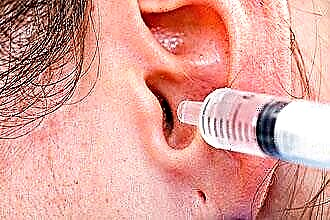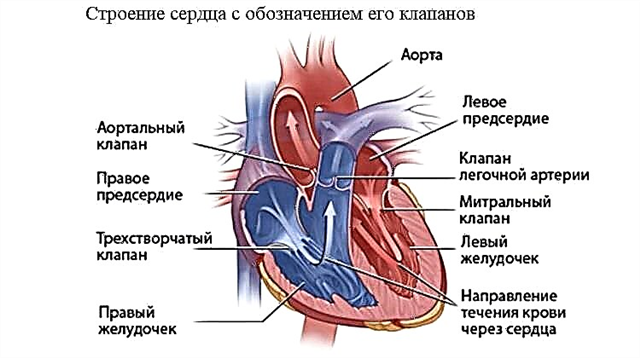Is the auricle peeling and itching? Concerned about itching in the ear canal? These symptoms should not be ignored. Peeling and itching in the ears can be the first signs of various dermatological pathologies - a fungal infection of the skin, an allergic reaction, psoriasis, etc. a layer of delicate skin of the ear canal. How to understand why the ears itch and peel?
 In this article, we will look at the most common causes of itching and peeling of the skin of the auricle and ear canal in adults and children, and also talk about the treatment of this unpleasant condition.
In this article, we will look at the most common causes of itching and peeling of the skin of the auricle and ear canal in adults and children, and also talk about the treatment of this unpleasant condition.
Hygienic reasons
It so happens that a person himself provokes pathological changes in the condition of the skin. This is especially true for the ears - surprisingly, most of the problems with the ears appear precisely due to improper hygienic care. If a person cleans his ears with a match, knitting needle, cotton swab, etc., the epidermis of the skin is injured, the nerve endings are irritated. In response to this, the sulfur glands begin to synthesize sulfur more actively - a secret that plays an essential role in protecting and moisturizing the ear canal.
Cleansing your ears diligently usually has the opposite effect - increasing the amount of wax.
The sulfur mass gradually moves to the outer edge of the auditory canal - this is how the ear cleans itself. This process is often accompanied by tickling and mild itching in the ear. To get rid of it, it is enough to rinse the ears with hydrogen peroxide or drip the ear canal with warm vegetable oil. This will help dissolve the sulfur and speed up its passage.
Many people, when faced with excess wax build-up in their ears, begin to cleanse them even more diligently. The irritated ear canal may begin to peel off; crusts, fragments of dead epidermis and sulfur will accumulate in it. In such conditions, the risk of infection of micro-lesions of the skin increases.
Inflammation of the outer ear often occurs precisely as a result of scratching the skin of the auricle.
In some cases, excessive cleaning of the ears produces the opposite effect - the ear canal becomes dry and sensitive, and practically no sulfur is produced. The skin may itch, peel off. Without sulfur, the ear becomes more susceptible to various infections, primarily fungal infections.
How to care for your ears correctly? You should adhere to these rules:
- do not clean the ear canal with a cotton swab, match or other hard objects;
- wash the auricle every day, and the ear canal - once a week (while cleaning the visible part of the ear canal, you should not penetrate into the deep sections);
- avoid getting water deep into the ear canal;
- regularly treat in-ear headphones, earplugs, etc with alcohol;
- if it becomes necessary to get rid of excess sulfur or sulfur plug, use non-mechanical methods of purification (washing with peroxide, instilling vegetable oil, using cerumenolytics - drops to dissolve sulfur);
 do not use dubious methods of treatment (for example, wax candles for the ears - they are ineffective and dangerous).
do not use dubious methods of treatment (for example, wax candles for the ears - they are ineffective and dangerous).
Seborrheic dermatitis
One of the conditions in which the ear itches and flakes is seborrheic dermatitis. This is a disease associated with inflammation of the surface layer of the skin as a result of an increase in the number of opportunistic microscopic microflora fungi (primarily, a fungus of the genus Pityrosporum, also known as Malassezia). This microscopic fungus is present on the skin of most people, but its amount is not significant. In a healthy person, he does not manifest himself in any way. Under certain conditions, the number of this fungus exceeds 50% of the skin microflora, and then various problems begin - disruption of the sebaceous glands, peeling, itching, thickening of the skin. Oily skin covered with horny scales is prone to inflammation, acne, and erythema.
Seborrheic dermatitis usually affects areas of the skin such as:
- the area behind the ears and auricles;
- nasolabial triangle;
- scalp;
- upper back and chest.
What affects the number of Malassezia fungi? It is known that the shift of microflora towards the fungus can be associated with:
- hormonal changes leading to an increase in the activity of the sebaceous glands;
- antibiotic treatment (they destroy bacteria - the main competitors of fungi);
- a sharp change in the climatic zone;
- nervous stress;
- strong weakening of the immune system.
Treatment of seborrheic dermatitis includes topical preparations containing nizoral and miconazole - these substances have a pronounced antifungal effect. Ointments with vegetable oils and keratolytic components are also used. During the course of treatment, it is recommended to wash your hair with a special anti-seborrhea shampoo.
If seborrheic dermatitis is due to an immune deficiency or hormonal imbalance, topical therapy will only improve the condition of the skin for a short time. Long-term results require treatment aimed at restoring normal hormonal and immune regulation.
Otomycosis
Otomycosis is a fungal infection of the skin of the ear canal. Its first stages go unnoticed - the patient may be disturbed by dry ears, slight itching, peeling. Over time, the itching intensifies, and a plaque appears on the skin, the color of which depends on the causative fungus (usually black, yellow-green, brown plaque of a dense consistency). In the later stages of the disease, a thick, dark mass containing a large number of fungal spores is released from the ear canal (this can be checked by bacteriological inoculation of a smear from the ear to the fungal microflora).
Why does otomycosis appear? Like other fungal infections, otomycosis develops only under certain conditions:
- with a decrease in human immunity;
- with a decrease in the amount of bacterial microflora of the skin (for example, itching and peeling in the ears during antibiotic treatment can be a symptom of the development of a fungal infection);
- when the pH of the skin surface changes to the alkaline side (normal skin pH is 5.5, while for fungi the optimal level is 6-6.7; sulfur plays a great role in maintaining the acid-base balance - it is believed that this is one of antifungal agents);
Otomycosis can be the result of careful removal of sulfur from the auditory canal - this disrupts the acid-base balance and makes the epithelium defenseless against infections.
Treatment of otomycosis begins with local therapy. First of all, these are antimycotic ear drops. In the absence of an effect, therapy is supplemented with systemic antifungal drugs. The sensitivity of fungi to antimycotics differs among different types of pathogens. For the selection of a highly effective treatment, it is recommended to pass a bacteriological culture of an ear swab with the determination of sensitivity to antifungal drugs.
Allergic dermatitis
 Allergic dermatitis on the skin of the ear is not uncommon. Food and respiratory allergies rarely manifest themselves on the skin of the ears. Much more often the skin of the auricles suffers from allergies caused by prolonged contact with the allergen. This type of hypersensitivity reaction is called allergic contact dermatitis.
Allergic dermatitis on the skin of the ear is not uncommon. Food and respiratory allergies rarely manifest themselves on the skin of the ears. Much more often the skin of the auricles suffers from allergies caused by prolonged contact with the allergen. This type of hypersensitivity reaction is called allergic contact dermatitis.
For example, if the earlobe itches and peels off in a pierced person, the first step is to check for a contact metal allergy.Most often, allergic contact dermatitis develops when wearing costume jewelry, but jewelry can also cause allergies.
Nickel is the leader among metals that can cause rashes, peeling, swelling and itching of the ears. It is quite often used in the manufacture of jewelry.
Gold and silver are "noble" metals that rarely enter into chemical reactions with surrounding substances. But the impurities that make up jewelry may well provoke a hypersensitivity reaction.
Contact dermatitis can also be caused by dust mites in your apartment. These microscopic arthropods can live in pillows and mattresses. Also, the reaction can be caused by the ingress of mold spores into the ear canal.
Treatment of allergic dermatitis on the skin of the ears is not much different from standard antiallergenic therapy.
To reduce discomfort, it is recommended to take antihistamine tablets - they reduce itching, and at the same time, inhibit other symptoms of inflammation.
Your doctor may prescribe topical medications to reduce flaking and rashes. Their selection is strictly individual.
It should be noted that the treatment of allergic dermatitis will be successful only if contact with the allergen is minimized. Otherwise, at the end of the course of treatment, unpleasant symptoms will reappear.

 do not use dubious methods of treatment (for example, wax candles for the ears - they are ineffective and dangerous).
do not use dubious methods of treatment (for example, wax candles for the ears - they are ineffective and dangerous).

